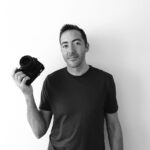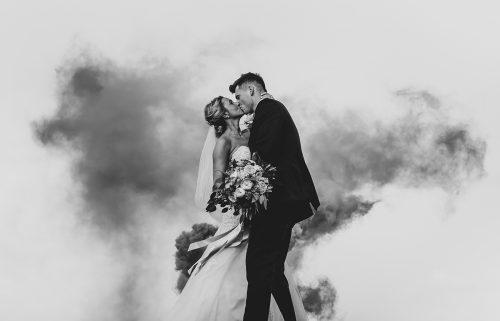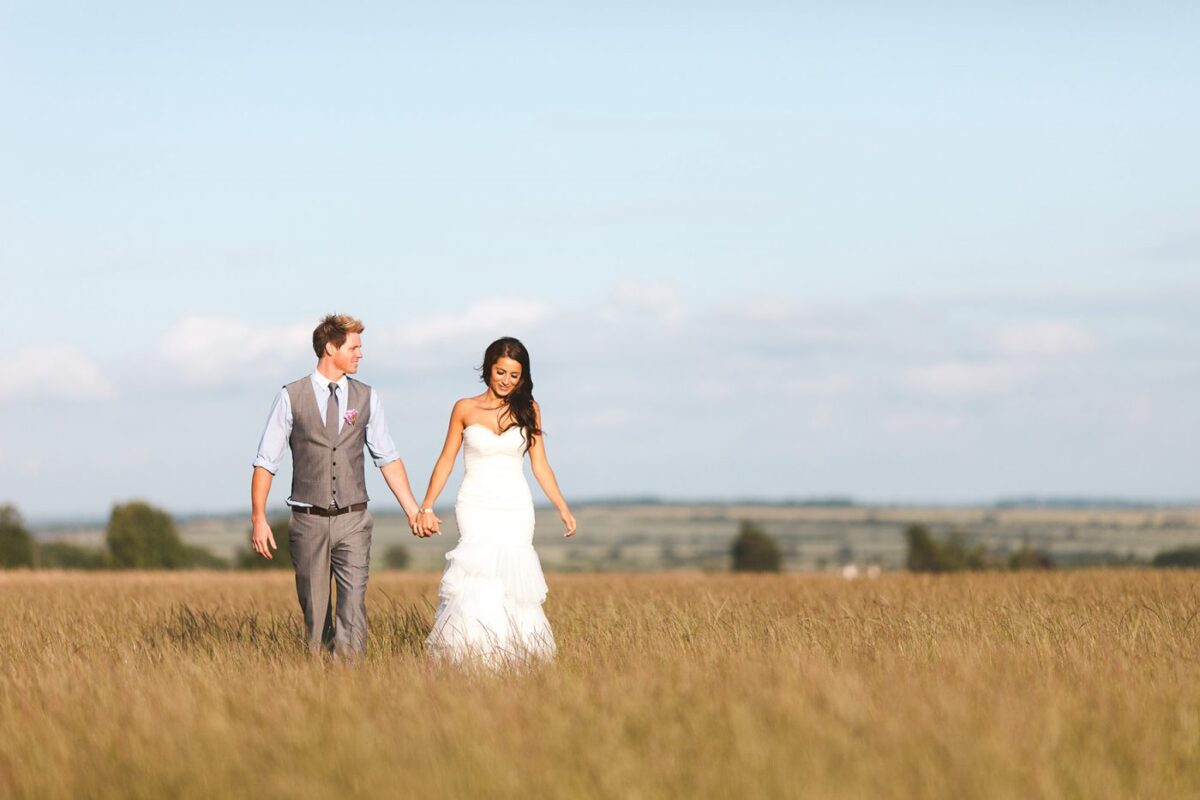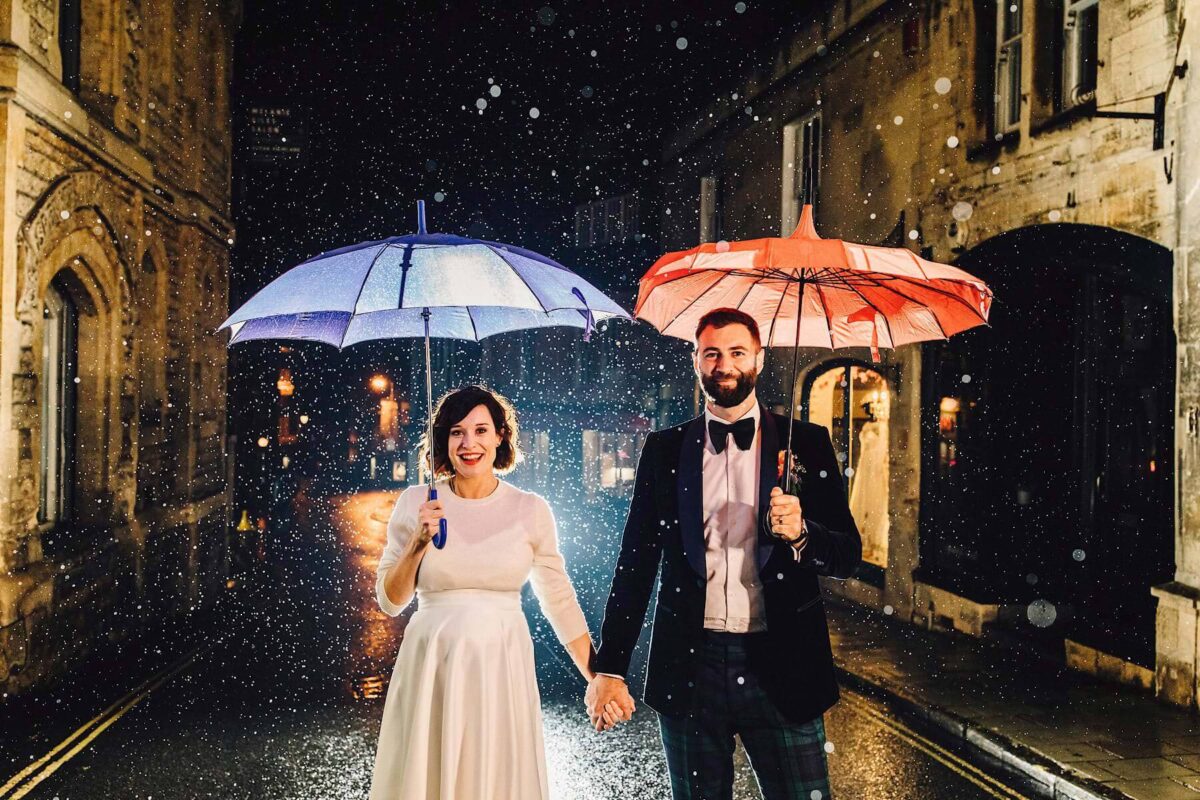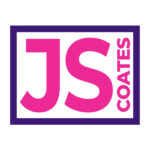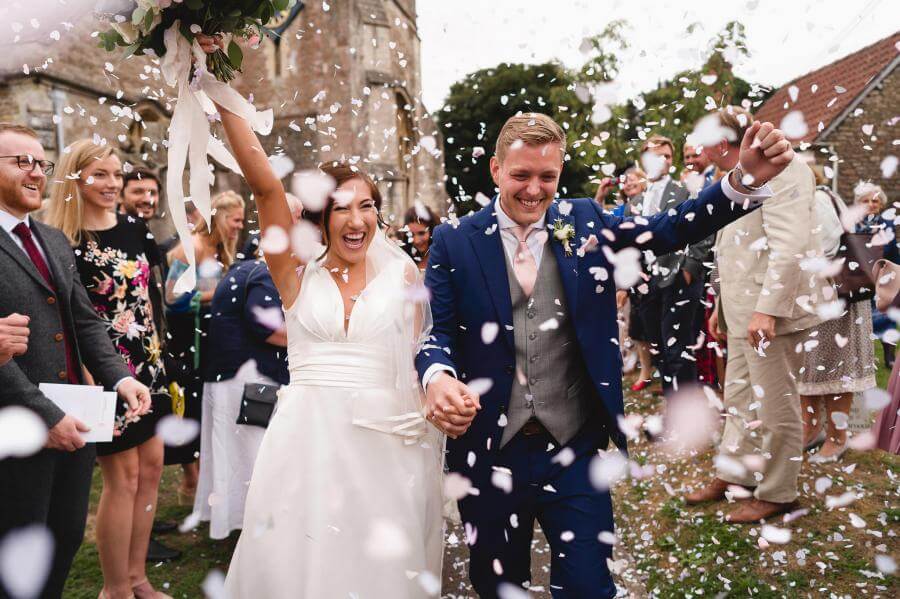
Wedding photographers may take photos, but they actually spend most of their time at their desk! Here, four professional photographers share where they spend most of their time and give a glimpse into their current photography workstation and desk setup.
Wedding Photographers Office Desk Spaces
Four wedding photographers share their home office and desk setups, offering insight into the hardware and software they use when back in the office editing.

I have always used Macs, ever since I was a kid. My mum was a journalist, and we had one at home from a young age. I currently edit on a 27-inch iMac, which is about 3 years old but still performs well. I also have a laptop that I use when working abroad.
When I’m working at the desk, I edit using a Behringer MIDI board, which is typically used for music production. It provides fast control over various aspects of the editing software. Thanks to COVID, I’m currently sharing my office with my wife, which is actually really nice! However, it does mean I’m a bit more squished at my desk than usual. In fact, I almost can’t bear to show you how messy it is—just don’t look too closely!

Software – I use PhotoMechanic when I get back from a shoot to offload memory cards and organise my files. I edit with Lightroom, using custom presets and profiles. For any major retouching, I turn to Photoshop.
I also use Carbon Copy Cloner for my backup needs. My background in TV has made me extremely conscious about data storage and redundancy, so I’m very meticulous about backups and ensuring I have copies of everything in multiple locations.
Back up Hardware – I use a fast Lacie hard drive with a Thunderbolt connection for working, including imports and exports to Lightroom. This setup helps speed up the process, so I don’t have to wait too long for Lightroom to export a wedding. For archiving, I use separate external hard drives and maintain a rotating system to ensure one is always stored off-site. I also have various small SSD drives for additional backups of different projects.
Client Galleries – Once I’ve edited a wedding it’s all uploaded and saved online. I use Shootproof for my gallery system and I offer all my couples completely free, full-res downloads from their gallery.It’s amazing how much things have changed over the last 5-10 years, evolving from DVDs to USBs and now to digital delivery. What’s great is that each transition has made it easier and simpler for couples to share their photos.
I’m Chris, a Birmingham based wedding photographer and this is my workspace (complete with 80’s action figures). It’s a standing desk I made myself from old kitchen counter worktop and pinion legs! Its great!
I’ve set up my space to make it really easy to jump on Zoom calls. I use a Logitech webcam, a ring light, and a Blue Snowball mic, and the results are fantastic. I use a custom-built Chillblast PC platform and have subscriptions to Adobe, Dropbox, and Microsoft products, which also transfer to my Dell laptop for editing on the go.

For editing, I use Adobe Lightroom and Photoshop, along with Topaz Labs for noise reduction. I’ve also recently invested in Luminar 4, which is fantastic. I prefer using a Wacom graphics tablet over a mouse and a Loupedeck to assist with my edits in Lightroom.
Client Galleries – For my clients, I love using Shootproof galleries—they’re fantastic. I also utilise the contracts and contacts features of Shootproof to help manage everything from booking to completion.
My website was custom designed using a Flotheme, and I manage the back end via WordPress, so it’s easy to upload new blogs and tweak my website.
Hi, I’m Albert, a wedding photographer based in Bristol. Here’s a look at my home office setup. I currently use a 27” iMac from 2017.
It’s equipped with a 4.2 GHz i7 processor and 40GB of RAM, along with a 1TB SSD and a Radeon Pro 580 graphics card with 8GB of VRAM.
I also have a 12” MacBook with a 1.3GHz dual-core Intel Core i5, 16GB of RAM, a 512GB SSD, and Intel HD Graphics 615. They don’t make these anymore, but I wanted the smallest, lightest laptop possible for travel. Even with these maximum specs, editing isn’t a great experience. However, my priority was something small and light, suited for travel, and it’s more than capable of backing up and culling.

I use an old Samsung SyncMaster display as a second monitor. I’ve owned it since 2012, but it does the job for playing Netflix and YouTube.
Software – I use Lightroom Classic (LrC) for editing and have done so for over 10 years. I can’t deny it’s slow at times and has the occasional bug, but 99% of the time, it works flawlessly.
I used to use Pfixer for editing with keyboard shortcuts, which massively sped up my workflow. However, I recently bought a TourBox and am in the early stages of testing it out. I don’t think it’s any faster than using keyboard shortcuts, but it’s a bit more ergonomically friendly and fun to use. Essentially, it provides buttons, wheels, and dials that you can configure to Lightroom settings. Since it fits in the palm of your left hand, it leaves your right hand free to use the mouse and keyboard. So far, I really enjoy using it, and the bonus is that it takes up very little desk space.
I use Photomechanic for culling. Lightroom does this very well but for the volume of images I shoot Photomechanic is hands down the fastest for my workflow.
I use Things as my daily ‘to do’ planner. I would be lost without this software. I rely on it every single day to complete office tasks and admin.
I use Light Blue software for managing my business. It sends out forms and contracts to couples, ensuring I never double book a date. It tracks enquiries and bookings, produces invoices, and also helps with my finances and taxes.
I use JpegMini for reducing the size of images before uploading them to the cloud. For the small price it is a time saver.
Toggl is a free bit of software for tracking time. I started using it last year to track how long I spend editing. It’s really useful to know how long an edit takes and lets me know how productive I’m being.
Back up hardware – I store all of my images on a Drobo 5D. It’s a proprietary RAID system, but the advantage is that you can use all your old hard drives to create one large volume. I have 34TB of space in my main Drobo. I chose a RAID setup so that if one hard drive fails, my data remains secure. My main Drobo is backed up to a second Drobo 5D—complete overkill, but if the main Drobo fails, I’ll be covered. Additionally, I have a third copy of my RAW images 30 minutes away from my house, which I back up every few weeks. I don’t expect to ever need these backups, but they provide peace of mind. I also have a third Drobo 5D for storing all my old RAW files and edited JPEGs.
I use an 8TB Seagate hard drive for Time Machine, which makes daily incremental backups of my iMac. I can’t remember the last time I needed it, but you can never be too careful!
Client Galleries – I recently moved to Pic-Time. I’m new to it but very impressed with the functionality. Before this I used to use Shootproof and also Zenfolio.
Last but not least is my sound system! The computer is paired with a Bose Companion 5, which provides more than enough volume for Spotify. I also have a 7.1 home cinema sound system set up, though I haven’t used it since we had a baby!
I run my whole business from my 15” MacBook Pro. I fell into the Apple ecosystem when I bought my first iPhone about 10 years ago, and I must admit, I think it would be hard for me to switch away from it now. I just love how everything links together.
My phone and iPad are also important parts of my work life when I’m not at my desk. I do have a larger external monitor that I sometimes use to mirror my screen, but I often edit directly on the MacBook’s screen.

Software – All my weddings get culled in Photo Mechanic and then edited in Lightroom. I make a few tweaks to occasional pictures in Photoshop, but Lightroom handles the bulk of my editing. I run my exported JPEGs through Exposure 4 for an extra boost before shrinking the file size with JPEGmini. While in Lightroom, I use Pfixer to help speed up my editing.
I create a slideshow for every wedding using iMovie. For any promotional videos, I use FCPX. I also handle some audio editing and creation in Logic Pro.
I use Blog Curator to help me visualise wedding blogs before uploading the images to WordPress, and I use Album Stomp to design my wedding albums.
Back up hardware – My backups start with the SD cards I shoot on; they’re never deleted until the wedding is delivered. I back up every wedding onto portable hard drives as soon as I get home, so within an hour of returning. I keep the RAW files in four separate locations. I have both on-site and off-site hard drives that are mirrored for extra security.
Once I cull a wedding, I move the culled files to my working machine (which has cloud backup running) and edit the wedding. The JPEGS are then uploaded to Pic-time and also on to another HD for storage.
Client Galleries – I use Pic-Time for gallery delivery. I love the modern feel of it, and the built-in storage and automation are fantastic. It’s very easy to set up and just let it run. I host my slideshows on Vimeo but embed them on a password-protected page on my website.
My office is decorated with posters and pictures of my favourite bands, quotes, and movies. I also have some photos of my kids on the walls, along with a few light-up signs. Since we spend so much time in front of the computer, I think it’s crucial to have a space that feels like home and is cosy to be in. I also use smart bulbs in the room, setting them to daylight white balance when editing to ensure consistent lighting no matter the time of day.

